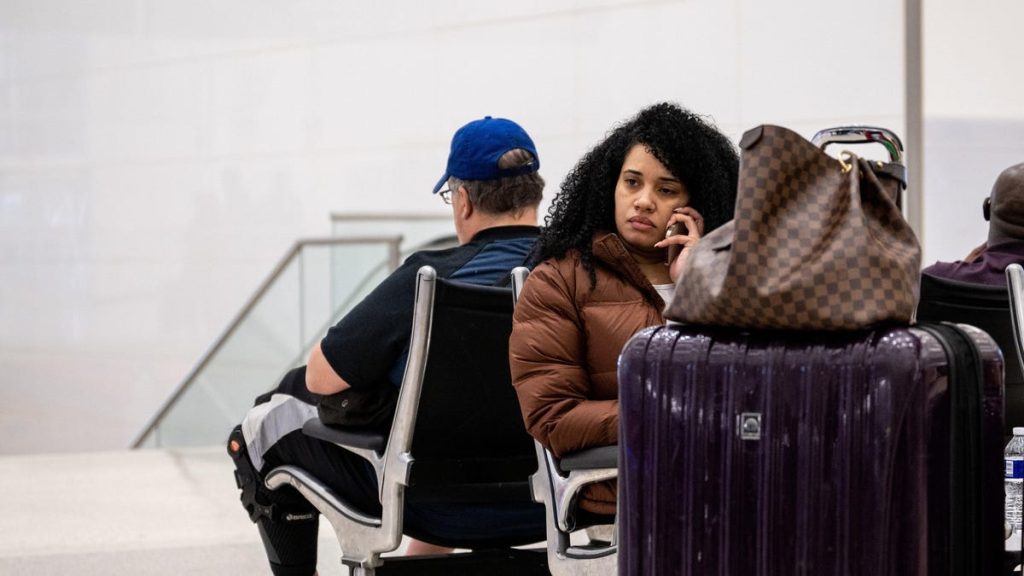Southwest Canceled Nearly 11,000 Flights Since Thursday

HOUSTON, TEXAS – DECEMBER 27: Travelers wait in the lobby at George Bush Intercontinental Airport on December 27, 2022 in Houston, Texas. Southwest Airlines has canceled approximately 5,400 flights in less than 48 hours due to a variety of issues including this year’s historic winter storm and scheduling complications involving crew members. Photo: Photo by Brandon Bell (Getty Images)
The great Southwest Airlines Meltdown of 2022 continued Wednesday with an additional 2,500 flights canceled—62 percent of the company’s scheduled flights for the day—in what industry experts are calling the worst airline kerfuffle in decades.
Southwest left thousands of passengers stranded over the holiday after canceling 71 percent of its scheduled flights since Thursday. While there was a serious weather event bearing down on the U.S. last week other airlines managed to stay the course, canceling at most 22 percent of flights, with cancelations improving as the storm weakened. Cancelations at Southwest, however, continues after both the holiday rush and storm cancelations have ceased.
Now the feds are getting involved, looking into what exactly is behind the crumbling of Southwest Airlines. President Biden tweeted about the issues and the Department of Transportation is investigating. From the New York Times:
Pete Buttigieg, the transportation secretary, said in an interview on “NBC Nightly News” on Tuesday that it was “an unacceptable situation” that would demand a closer look at Southwest’s scheduling system.
“We all understand that you can’t control the weather,” he said, adding that “this has clearly crossed the line from what is an uncontrollable weather situation to something that is the airline’s direct responsibility.”
Senator Maria Cantwell, chair of the Senate Commerce Committee, said in a statement on Tuesday that the committee would be investigating the causes of the meltdown, and that “the problems at Southwest Airlines over the last several days go beyond weather.”
“Many airlines fail to adequately communicate with consumers during flight cancellations,” she said. “Consumers deserve strong protections, including an updated consumer refund rule.”
So what’s going on? Two airports that have the largest Southwest presence—Chicago’s O’Hare and Denver International—were heavily affected by Winter Storm Elliott. Flight crews are also getting hit hard by the “tripledemic” of COVID, nasty seasonal flu, and a respiratory virus, CNN reports.
The bad weather and health problems exacerbated issues with Southwest’s unique scheduling model. Instead of flying out of one or two major hubs and servicing various areas like other airlines, Southwest operates on a “point to point” model. This model can scatter flight crews when multiple routes need to be canceled all at once. The cancelations haven’t just stranded passengers; Southwest flight attendants and crews are also left without rides to their next locations.
Southwest Chief Operating Officer Andrew Watterson explained to CNN that the company’s outdated scheduling software wasn’t able to handle all the cancelations and complex permutations to sync crews up with available planes:
Southwest ended up with planes that were ready to take off with available crew, but the company’s scheduling software wasn’t able to match them quickly and accurately, Watterson added.
“As a result, we had to ask our crew schedulers to do this manually, and it’s extraordinarily difficult,” he said. “That is a tedious, long process.”
Watterson noted that manual scheduling left Southwest building an incredibly delicate house of cards that could quickly tumble when the company encountered a problem.
“They would make great progress, and then some other disruption would happen, and it would unravel their work,” Watterson said. “So, we spent multiple days where we kind of got close to finishing the problem, and then it had to be reset.”
In reducing the company’s flights by two thirds, Southwest should have “more than ample crew resources to handle that amount of activity,” Watterson said.
But the problems at Southwest have been brewing for the last two years, employees familiar with the problems told CNN. Cut-throat staffing and low investment on improving technology in the name of—what else—investor profit have created a storm more perfect than any bomb cyclone from Canada could dream up.
Southwest’s current plan is to fly a significantly trimmed-down schedule until later this week when officials with the company hope the problems will be resolved.



